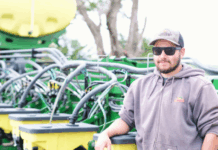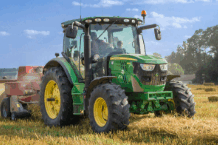U.S. Department of the Interior
One of nine bureaus under the Interior Department, the Bureau of Land Management’s roots go back to America’s founding. BLM was established on July 16, 1946, when the General Land Office and the U.S. Grazing Service were merged. More than 70 years later, it remains a small agency with a big job — managing public lands for multiple-uses like recreation and natural resource development for the benefit of present and future generations.
Check out these interesting facts about the current responsibilities and duties of BLM.
- BLM’s predecessor helped homesteaders settle the American west. The General Land Office, which was founded in 1812 and later became BLM, oversaw the disposition of ceded and acquired lands. This office helped organize western land settlement after our young nation began acquiring land through the Louisiana Purchase. Today, BLM continues to maintain more than nine million historical land documents and records available to the public.
- BLM oversees 245 million surface acres of public lands for the American people. The agency manages 1 in 10 acres in the U.S. That’s a little bit less than the size of Texas. The land is primarily located in the western states, including Alaska, California, New Mexico and Wyoming.
- BLM’s oil and gas program is a boon for the U.S. economy. In 2015 oil and gas development on Bureau-managed lands supported 188,200 jobs nationwide and contributed $50 billion to the economy. The over $2 billion of annual proceeds from leases and royalties in 32 states is split between the U.S. Treasury and the state where the energy is developed. In addition, BLM manages operations on roughly 4,500 oil and gas leases on behalf of tribes and individual Indian mineral owners.
- BLM firefighters protect public lands, wildlife neighboring communities from the threat of wildfires. Switching camouflage for flame-resistant gear, many veterans continue to serve our nation by joining BLM firefighting crews. Currently there are eight BLM veteran wildland fire crews ready to respond to crises across the country. BLM also partners with other federal agencies through the National Interagency Fire Center to manage wildfires, such as those currently blazing in Alaska, Arizona, Colorado and New Mexico. Recently, BLM firefighters in Washington helped save dozens of endangered pygmy rabbits.
- Many BLM-managed lands serve as outdoor laboratories, allowing students to discover the ancient world through real artifacts. Forty years ago, BLM created temporary buildings to protect the Cleveland-Lloyd Dinosaur Quarry in Utah. These artifacts still enlighten students to the wonders of studying history, and give them the foundation of archaeology and paleontology — inspiring lifelong stewards of America’s public lands.
- Awesome recreational activities abound on BLM-managed public lands. From traditional activities like hiking, hunting, and fishing to daring adventures like mountain biking, horseback riding, whitewater rafting, hang-gliding and off-highway vehicle driving, there are so many fun activities available on public lands. Over 6,000 miles of National Scenic and Historic Trails provide wonderful connections to nature in 15 states. Experience them yourself — find outdoor opportunities in your area.
- Public lands power American homes and businesses. BLM’s “all of the above” energy approach generates an increasing amount of energy on public lands. Over 375 million tons of coal were produced on federal land in 2015, most of it used for generating electricity. Forty percent of the country’s geothermal energy is generated on public lands. In addition to overseeing energy development on public lands, BLM also authorizes transmission and pipeline projects to carry power to growing markets in the West and Southwest.
- BLM’s grazing program helps support healthy rangelands. BLM manages livestock grazing on 155 million acres of public lands, preserving open spaces and shaping the character of the American West. Reindeer grazing across 3.8 million acres is just one of the many grazing opportunities. Learn more about BLM’s rangelands and grazing program.
While the Bureau of Land Management may be a relatively small agency, its mission as the largest federal land manager has a huge impact on how we interact with public lands.
What else can you learn about the Bureau of Land Management? Visit www.blm.gov to find out.



